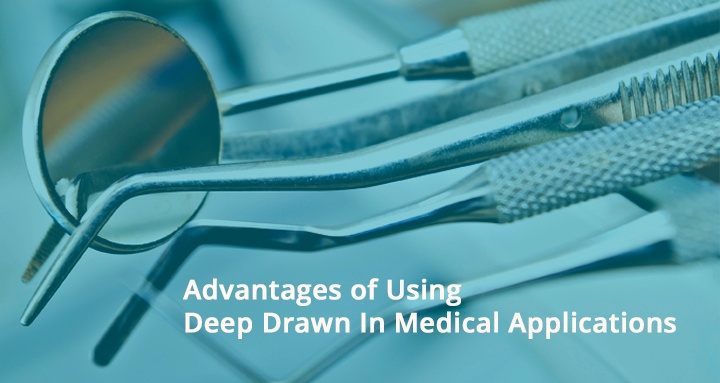Advantages of Using Deep Drawn In Medical Applications
Advantages of Using Deep Drawn In Medical Applications
August 19, 2015

Medical equipment is manufactured to the highest standards to ensure components exhibit the right combination of characteristics such as adequate strength, proper functionality, easy sterilization and ease of manufacture. Irrespective of where or how medical components are used, healthcare staff must have confidence that they will perform the required function flawlessly with no risk of patient infection.
The size of medical components is always a critical factor because medical tools need to be easy to handle and in many applications, such as in dentistry, the components need to be small and strong. These requirements can be met by using deep drawing production processes, which are able to produce tubular components that are compact, yet light and strong. Deep drawing can produce parts with height-to-width ratios of 8:1 for stainless steel and greater than that for more malleable materials.
A major benefit of deep drawing is that parts produced are seamless without joints or imperfections. There are no awkward nooks, crevices and sharp angles to trap bacteria. The natural work hardening that occurs during the process means that parts produced are strong. Material thickness of parts can be tightly controlled and the process allows the manufacture of flawless parts that are extremely thin.
Unlike many other manufacturing processes, deep drawn parts have an excellent surface finish that in many instances needs no further treatment. These finishes are highly amenable to further polishing to provide a mirror-like finish. Alternative finishes, such as nickel and chrome plating, may be applied with the further advantage of being able to obtain a guaranteed 100 percent internal and external coverage.
All of this is achieved at a lower unit cost than is possible with many other manufacturing processes. Unit production costs are low especially if automated part feeding equipment is used. Naturally, the relatively high initial cost of deep drawing dies and other tooling needs to be recovered, but provided the production volumes are reasonably high, the amortized production costs for deep drawn medical parts are low.
The use of deep drawing production processes for medical components offers many advantages. Unit production costs are minimal, and parts produced are strong and have a high quality finish without any surface defects that could cause infection. Tight manufacturing tolerances can be easily achieved, and a wide range of finishes are available that include highly polished nickel and chrome plating and powder coating.


